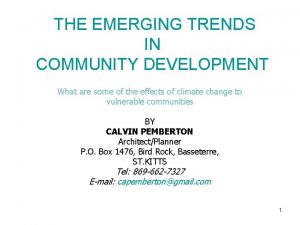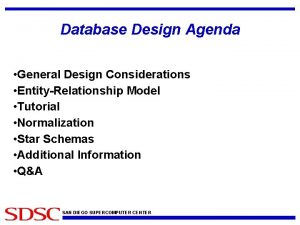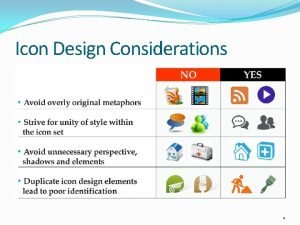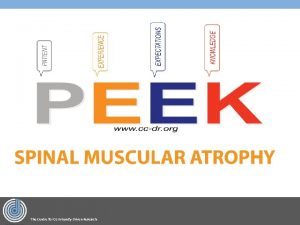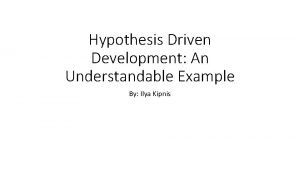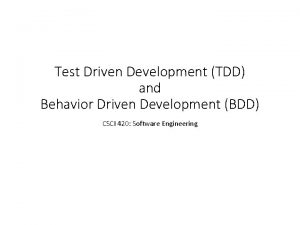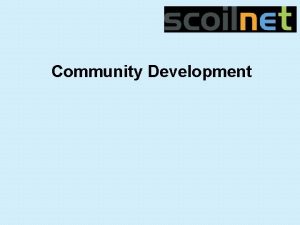Community Driven Development Key Design Issues Considerations Sean












- Slides: 12

Community Driven Development Key Design Issues & Considerations Sean Bradley Lead Social Development Specialist March 2018

Overview CDD Core Design Principles • Institutional Issues • Basic Implementation Models • Targeting • Funding • Public vs. Private investments • Other Considerations Community/ Group Focus Participatory Monitoring Community involvement in implementation Participatory Planning Community Control of Resources

Institutional Issues • 3 broad responsibilities: • Oversight/general mgmt, facilitation & tech support, sub-project implementation • 3 levels: • national, local, community National Local • 3 basic models: • Gov/NGO partnership, sectorled approach, LGU- led approach Community • Oversight • Overall management • Facilitation • Technical/fiduciary support • Sub-project implementation

3 Basic Implementation Models Government/NGO Partnership LGU-led Approach Communities/ CBOs NGO or Pvt Firm Sector-led Approach LGU & Line Dpts. Decentralized Line Department Communities/ CBOs LGU Line Dpts. or NGOs Local Government Unit Central Agency (Line or Staff) Central Line Agency (Ag. , RD, etc. ) Central Staff Agency (LG, Pres. Off. , etc. ) Financing Source 4

Comparing Basic Models Model 1. Gov/NGO Partnership Pros • • 2. Sector-led Approach • • 3. LGU-led Approach • • Cons Fast-- contracting in capacity Useful in FCS/low capacity context Participatory orientation Streamlined fiduciary procedures • • • Stronger field presence Technical support generally available Can also be fast Co-financing possibilities • • • Single-sector bias Supply driven Competition/jealousies with other sectors Supports decentralization More sustainable and scalable Sector-neutral Potential co-financing • Weaker institutional and technical capacity Slower start-up Crowding out sector $ Gvnt fiduciary arrangements • • • Unsustainable long-term Can be more costly Undermines efforts to build Gov. capacity Sub-project bias O&M

Targeting • National and local • Poverty focused • Proxy measures in the absence of poverty data • Ear-marking (to cover marginalized groups) • Political considerations

Targeting– 3 cases Myanmar Philippines CDD Ops. Vietnam

Funding • Width vs. breadth (coverage vs. cycles) • Per capita and poverty adjusted • Average size of grant and relation to basic needs/investments • Competition or entitlement • Community counterpart • Government rules/regs on transferring $ to non-state groups

Basic Fund Flows National level Local level Com. level Executing agency Delivering agency/LGU Community Financing Agency/MOF $ Flow Options

Public vs. Private Investments • Perspective • • • Basic needs vs. market opportunities Communities vs. producer groups/individuals Marginalized vs. productive poor Cost effectiveness vs. rates of return Unit costs much higher (per hh) • Subproject cycle • • Bottom-up planning vs. market oriented analysis Community implementation vs. individual business planning Approval per sector policy vs. competitive window Counterpart in kind vs. counterpart in cash • Institutional capacities • • Focus on needs vs. focus on opportunities Social mobilization vs. market linkages and business brokering Cost-effectiveness or reasonable cost vs. financial viability Health, education and social protection specialists vs. business administration, ag economists, marketing

Other Considerations • Institutional: • Decentralization context: laws, capacities, devolved services, sub-national transfers, links to LDP process • Implementation: • Menu: open or restricted? • Technical and implementation support: who and how? • Fund flows and control: Community or lowest gov. unit? • Fiduciary regulations and implications on fund transfers and use: National systems or PIM? • Sub-projects: force account or contracted out?

Thank you!
 Emerging trends in community development
Emerging trends in community development What are the general considerations in machine design
What are the general considerations in machine design Database design considerations
Database design considerations Collaboration design considerations
Collaboration design considerations Biopharmaceutic considerations in drug product design
Biopharmaceutic considerations in drug product design Design considerations icon
Design considerations icon Ethical issues in experimental research
Ethical issues in experimental research Design considerations for mobile computing
Design considerations for mobile computing What is a costume
What is a costume List the key design issues for an smp operating system
List the key design issues for an smp operating system What is the history of community development?
What is the history of community development? Centre for community driven research
Centre for community driven research Ilya kipnis
Ilya kipnis
